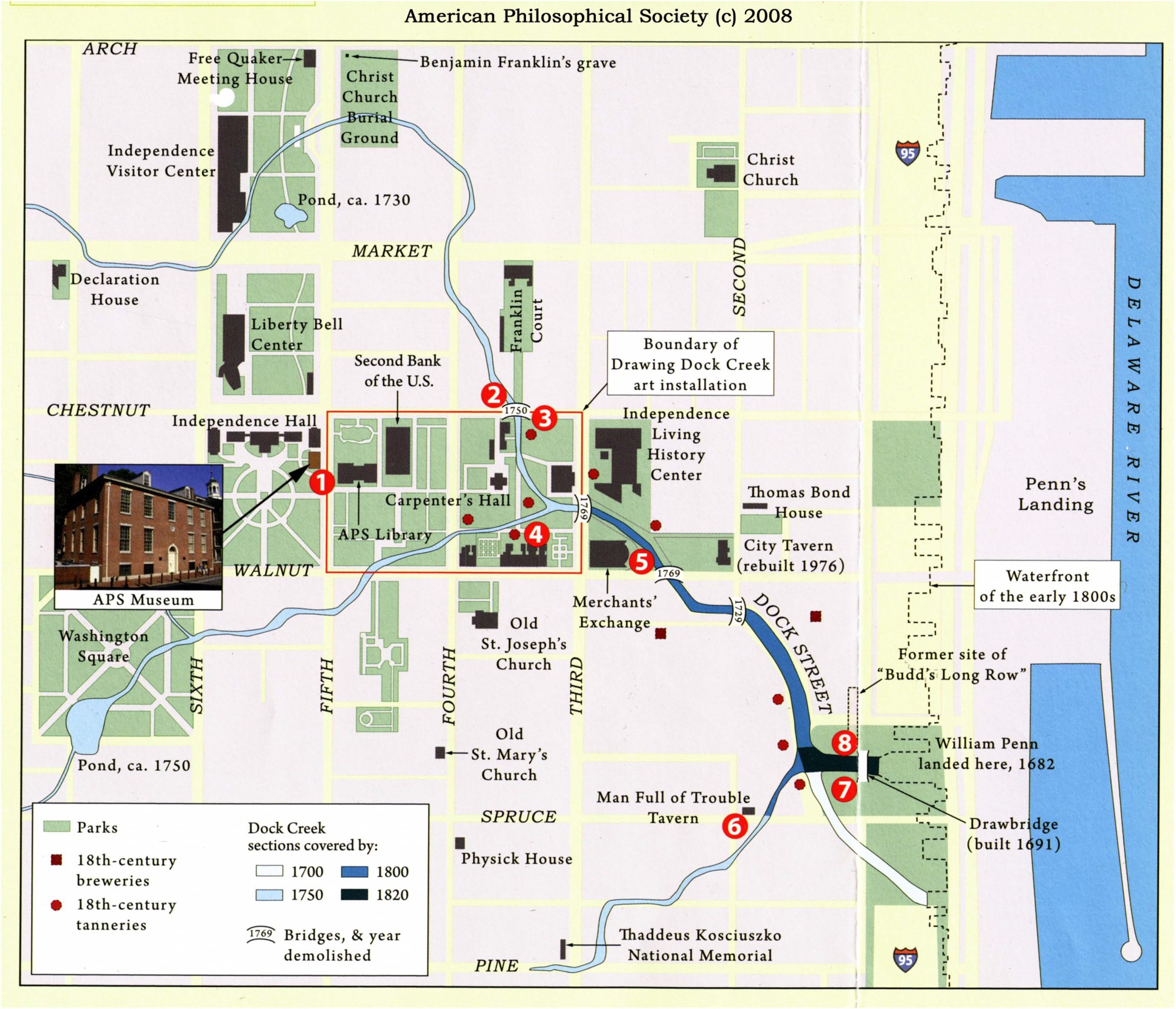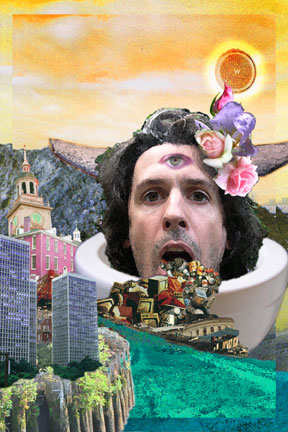This post first appeared on PhillyH2o in 2010.
An Art Installation by Winifred Lutz
in Independence National Historical Park in Philadelphia
Winifred Lutz’s installation, more fully explained and illustrated in the slideshow PDF linked below, was one of several water-related projects commissioned by the American Philosophical Society Museum in 2008, culminating in a “Water Walk Weekend” on September 20 and 21.



To accompany Winifred’s work, the APS created a brochure that has an excellent historic map of Dock Creek and vicinity. Performance artist Brett Keyser created a fascinating piece, TANN, HORNS, & DEAD DOGS: Tales of Civic Effluvia, related to Dock Creek, which used Winifred’s installation as his outdoor stage and set. And even I got into the act, developing a 20 minute version of my Creek to Sewer lecture and presenting it seven times to more than 150 people over the weekend.
The week before, I also got to take a walk in a sewer with a newspaper reporter and photographer to help publicize the weekend, an underground tour that is the subject of this piece about my second trek Down Under, into the sewers of Philadelphia.
Finally, this is as good a place as any to post this drawing of what is mislabeled the Dock Street Sewer, as it looked when a section was unearthed in 1962.

